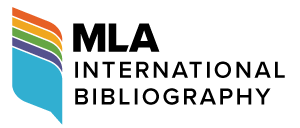Aims & Scope
Aims
The Journal of English and Applied Linguistics (JEAL) seeks to publish high-quality research that addresses real-world linguistic challenges through rigorous empirical and theoretical studies. We prioritize data-driven research that exemplifies scientific rigor throughout the processes of literature review, data collection, and data interpretation. In addition, we also highly value theoretical, perspective, and conceptual papers that address debates and current issues in applied linguistics. These works should advance the field by filling existing gaps in the literature, offering innovative perspectives, or proposing practical applications that have a meaningful impact on both academic discourse and societal practices.
Intended Readership
JEAL is designed for a diverse readership that includes academic researchers (experts and students), educators, linguists, policymakers, and professionals engaged in language-related fields. Our readers are those who seek to understand and apply linguistic theories to solve practical problems as well as those interested in the latest developments in applied linguistics research. We aim to serve scholars and researchers from various linguistic backgrounds, including those from the Inner, Outer, and Expanding Circles of English.
Scope
We welcome research utilizing linguistic theories to describe and solve real-world problems that interface with language use. The focus areas, among other things, include:
- Language in education: English for Academic Purposes; language teaching, learning, and assessment; classroom discourse
- Language in society: Multilingualism; language contact, variation, and change; language attitudes and ideologies; language planning and policy; language and politics; language in migration; language of the media; language and identity; language and power; interpersonal and intercultural communication
- Language in the professions: English for Specific Purposes; language in legal systems; language in healthcare systems; workplace communication
- Language and technology: Internet linguistics, AI integration in language teaching, learning, assessment, research.
- Language and the brain: Language acquisition; cognitive processing in language tasks
Article Types
JEAL classifies article submissions into two types based on length, content, and purpose:
- Short Articles: Non-empirical papers discussing current issues in applied linguistics, ranging from 3,000 to 4,000 words, excluding references and appendices; includes editorials and perspective papers by editorial board members or invited scholars
- Long Articles: Empirical studies featuring first-hand data analysis or content/textual analysis, ranging from 6,000 to 7,000 words, excluding references and appendices





